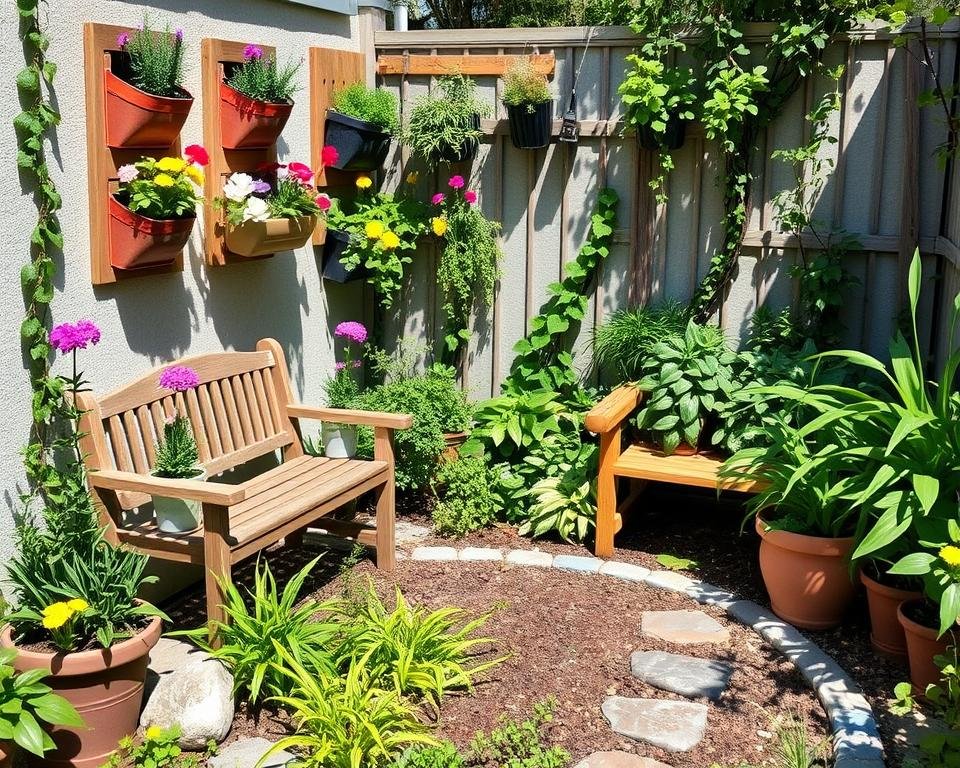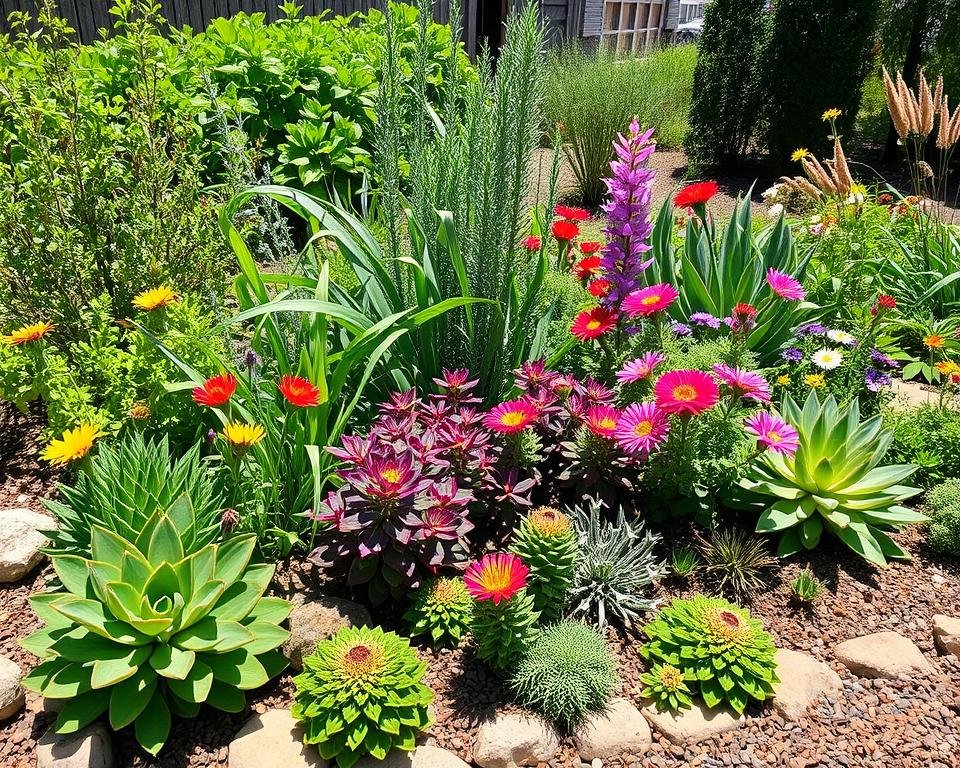Ever ponder how nature’s complex connections could boost your garden’s vibrancy and resilience? Companion planting might be the answer. By carefully selecting which plants to pair, you can tap into their synergistic effects. This approach can improve growth, ward off pests, and enrich soil, leading to a healthier garden through sustainable farming.
This article delves into the captivating realm of companion planting. We’ll see how it can turn your garden into a thriving, self-sustaining ecosystem. You’ll learn about pest control, soil enrichment, biodiversity, and yield enhancement. Discover how polyculture and symbiotic agriculture can make your garden both stunning and productive.
An exploration of how planting certain crops together can improve growth, deter
Companion planting is a traditional gardening method. It involves placing specific crops together to exploit their natural synergies. By grasping how plants interact, gardeners can tap into these relationships. This enhances yields and fosters a resilient, self-sustaining garden ecosystem.
Pest Control Through Companion Planting
Companion planting is a natural way to manage pests without chemicals. Plants like marigolds release compounds that repel aphids. Others, like nasturtiums, attract and trap pests away from valuable crops. By placing these “trap plants” strategically, gardeners can effectively keep pests at bay.
Soil Enrichment and Nutrient Cycling
Companion planting also aids in soil health and fertility. Legumes, for instance, can fix nitrogen from the air and transfer it to the soil. This enriches the growing medium for their neighbors. Nutrient cycling creates a self-sustaining ecosystem, where waste becomes food. This reduces the need for external inputs and boosts long-term soil vitality.
| Companion Plant | Benefit |
|---|---|
| Marigolds | Deter aphids and other pests |
| Nasturtiums | Attract aphids away from other crops |
| Legumes (e.g., beans, peas) | Fix nitrogen and enrich the soil |
Understanding the complex interactions between plants allows gardeners to cultivate a thriving, low-maintenance polyculture. This promotes pest control, soil health, and boosts overall garden productivity.
Polyculture: Embracing Nature’s Diversity
In the world of sustainable gardening, polyculture is a game-changer. It involves growing a variety of plants together, much like nature does. This approach boosts biodiversity and leads to a more stable ecosystem balance.
By growing different plants, you attract beneficial insects, pollinators, and microorganisms. These elements are vital for a healthy garden. Polyculture turns your garden into a vibrant, harmonious space. It’s a place where different life forms work together, supporting sustainable gardening.
Enhancing Biodiversity in Your Garden
A successful polyculture garden is all about diversity. By planting various vegetables, herbs, flowers, and companion crops, you create a lively ecosystem. This variety attracts beneficial insects and pollinators, keeping your garden healthy and balanced.
- Attract a diverse array of pollinators, such as bees, butterflies, and hummingbirds, to your garden.
- Encourage the presence of predatory insects that feed on common garden pests, helping to maintain a natural balance.
- Promote the growth of beneficial microorganisms in the soil, which can enhance nutrient cycling and soil fertility.
By adopting polyculture and biodiversity, you can build a garden that’s not just beautiful but also full of life. It’s a space where nature’s harmony is evident, thanks to your efforts in working with the ecosystem.
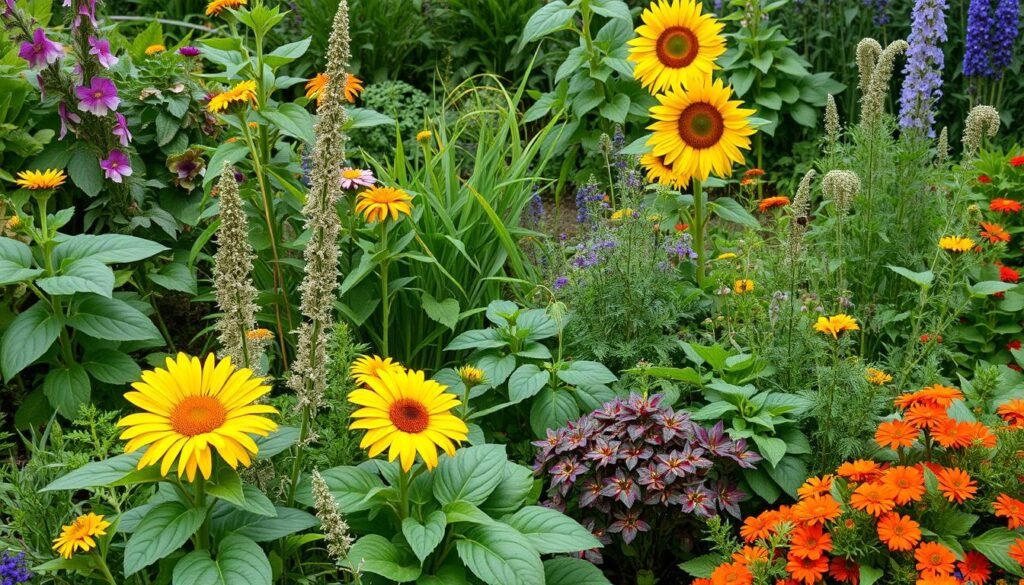
Symbiotic Agriculture: A Sustainable Approach
Companion planting is a key part of symbiotic agriculture, which uses ecological principles to foster self-sustaining systems. By understanding plant relationships, gardeners can cut down on synthetic fertilizers and pesticides. This leads to a more sustainable and regenerative gardening approach.
At the core of symbiotic agriculture is the understanding that diverse ecosystems are more resilient and productive than monocultures. By growing a variety of crops that complement each other, gardeners can harness natural synergies. This creates a thriving sustainable farming system that mirrors the balance and interdependence of natural ecosystems.
The principle of nutrient cycling is central to symbiotic agriculture. By placing certain plants strategically, gardeners can facilitate the exchange of essential nutrients. This reduces the need for external inputs and fosters a self-sustaining soil ecosystem. Such an approach not only boosts garden health but also supports long-term sustainable farming practices.
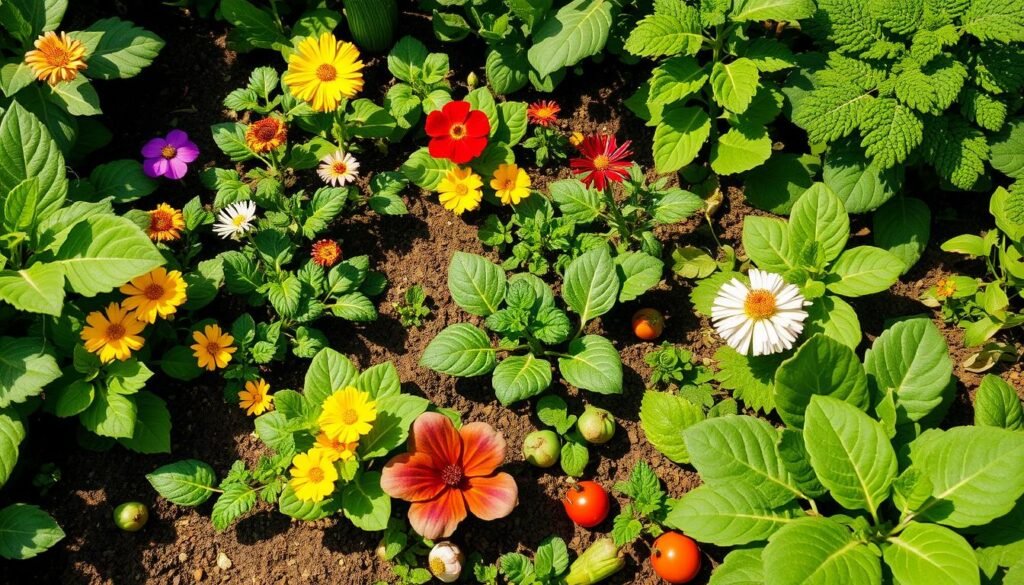
By adopting symbiotic agriculture, gardeners can establish vibrant, resilient, and self-sustaining systems that align with nature. This holistic method benefits plants and soil, promotes biodiversity, conserves resources, and enhances gardening ecosystem sustainability.
Companion Planting for Yield Enhancement
In the realm of sustainable gardening, companion planting stands out as a key strategy for naturally increasing crop yields. By carefully selecting which plants to pair, gardeners can foster a balanced ecosystem. This ecosystem boosts growth, wards off pests, and improves soil quality, all without the need for synthetic additives.
Boosting Crop Productivity Naturally
Companion planting’s main advantage lies in its ability to enhance growing conditions for each plant. For instance, placing tall crops like corn alongside shorter ones like lettuce offers shade and protection. Meanwhile, nitrogen-fixing plants such as beans can enrich the soil for other crops. These natural partnerships significantly elevate yield enhancement and crop productivity, adhering to natural methods and sustainable gardening practices.
Another significant benefit of companion planting is its role in pest management. Some plants naturally repel pests, attracting beneficial insects that prey on these pests. This holistic approach to pest control minimizes the reliance on chemical pesticides, fostering a more sustainable gardening environment.
| Companion Plant Pair | Benefits |
|---|---|
| Tomatoes and Basil | Basil helps repel aphids and improves the flavor of tomatoes. |
| Carrots and Radishes | Radishes help loosen the soil for carrots and deter carrot flies. |
| Marigolds and Vegetables | Marigolds act as a natural pest repellent and can improve soil health. |
By adopting companion planting, gardeners can maximize their garden’s potential. This leads to abundant harvests and a more sustainable method of food production.
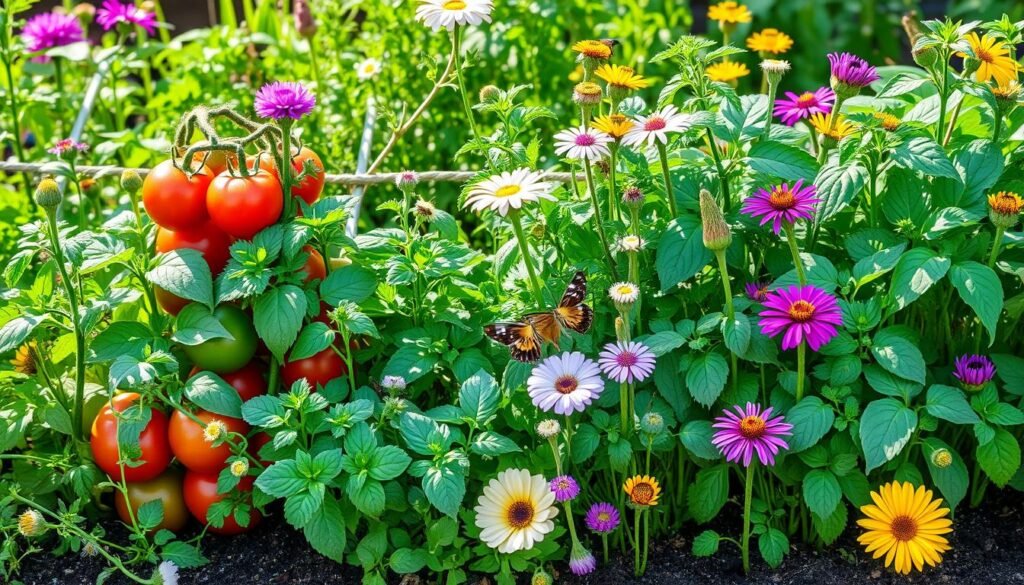
Classic Companion Plant Combinations
Gardening is deeply rooted in tradition, with certain plant pairings enduring through the ages. Exploring these timeless combinations allows gardeners to tap into the synergies that enhance their plots. It’s a way to truly appreciate the art of garden design.
One enduring example is the pairing of tomatoes with basil. This combination not only boosts the flavor of both but also repels pests from the tomatoes. Another celebrated method is the “Three Sisters,” a Native American technique that unites corn, beans, and squash.
- Corn offers a framework for beans to climb, while beans enrich the soil with nitrogen, benefiting all plants.
- Squash, with its expansive leaves, keeps weeds at bay and retains soil moisture.
- This trio exemplifies a harmonious system, optimizing space and resources.
These classic pairings highlight the value of traditional gardening wisdom. By adopting these proven combinations, modern gardeners can unlock their plots’ full potential. They can create vibrant, self-sustaining ecosystems in their own backyards.

| Companion Plant Combination | Benefits |
|---|---|
| Tomatoes and Basil | Enhances flavor, deters pests |
| The “Three Sisters” (Corn, Beans, Squash) | Provides structure, fixes nitrogen, suppresses weeds |
| Carrots and Radishes | Radishes help loosen soil for carrots, deter carrot flies |
| Marigolds and Vegetables | Repel pests, enhance soil health |
Incorporating Companion Planting in Your Garden
Companion planting demands careful planning and a thoughtful garden design. Begin by understanding each plant’s needs, including height, maturity, and light and water requirements. Arrange your plants to enhance their symbiotic relationships, creating a productive and eco-friendly space.
Planning and Design Tips
When designing your companion planting layout, consider plant height, growth habits, and resource needs. Place taller plants with shorter ones and pair fast-growing with slow-maturing crops. Ensure your plants’ light and water needs are met, allowing them to thrive together. Feel free to adapt your design as your garden’s needs change.
Companion planting can turn your garden into a dynamic, self-sustaining ecosystem. It reduces the need for chemicals and external help. By harnessing plant synergies, you can increase yields, repel pests, and improve soil health. This approach fosters a diverse, resilient landscape that supports a balanced environment.
FAQ
What is companion planting and how can it benefit my garden?
Companion planting is about placing different plants together to benefit from their relationships. It helps plants grow better, keeps pests away, and enriches the soil. This approach makes gardening more sustainable and healthy.
How can companion planting help with pest control?
Companion planting uses plants to repel or attract beneficial insects. For example, marigolds near tomatoes can keep aphids away. Nasturtiums can draw aphids away from other crops.
How does companion planting improve soil fertility?
Some plants improve soil fertility by recycling nutrients. This creates a self-sustaining ecosystem. It enriches the soil and reduces the need for synthetic fertilizers.
What are the benefits of embracing polyculture in my garden?
Polyculture grows a variety of plants together, like natural ecosystems. It boosts biodiversity, making the garden more balanced and resilient. This diversity supports beneficial insects and improves overall health and productivity.
How can companion planting boost my crop yields naturally?
Companion planting optimizes growing conditions for each plant. For example, corn shades lettuce and protects it. Beans enrich the soil for other crops. These natural synergies boost yields without synthetic inputs.
What are some classic companion plant combinations I can try in my garden?
Classic combinations like tomatoes with basil and the “Three Sisters” of corn, beans, and squash are proven. They improve flavor and create beneficial systems. Exploring these can inspire new combinations in your garden.
How do I incorporate companion planting into my garden design?
To include companion planting, plan carefully. Consider plant height, maturity, and needs. Arrange plants to maximize benefits. Be open to adjusting as you learn. Companion planting creates a thriving, sustainable garden.
